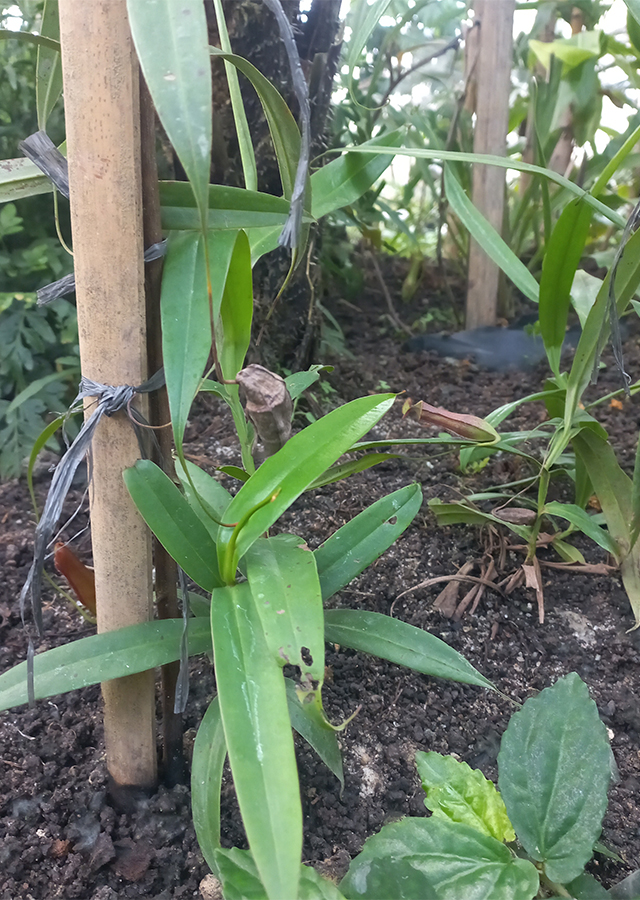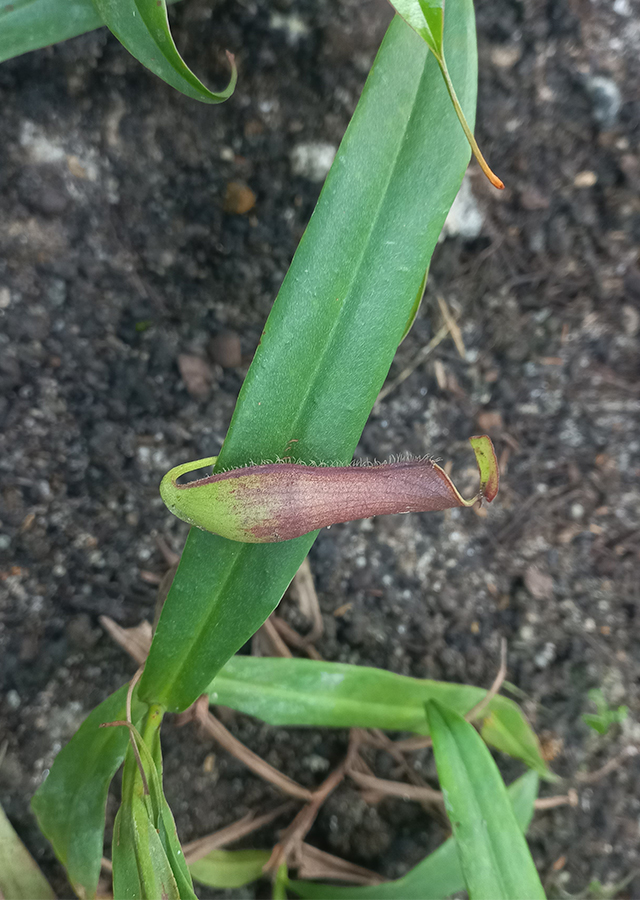Traditional Herbs from Nepenthes mirabilis
headache
- Take enough stems and leaves of the marsh pitcher plant, wash them thoroughly.
- Blend the two ingredients then squeeze.
- Drink the juice to reduce headaches.
What is Nepenthes mirabilis Looks like??



Parts of Nepenthes mirabilis that could be used
- Leaves
- Stems
- All Parts of the Plant
Nepenthes mirabilis Distribution
Swamp pitcher plants are a type of pitcher plant that has the widest distribution area compared to other types of Nepenthaceae. This species is found from Hainan, northern hemisphere to Cape York, southern hemisphere, from the Mentawai Islands in the west to New Guinea in the east. In Indonesia, this species is distributed in Bengkulu, Jambi, Lampung, Riau, West Sumatra, South Sumatra and North Sumatra. This species is used by local people, namely the stems as fence ropes. This species also has a unique pouch and is an attraction for ornamental plant lovers. However, based on its conservation status, this species has been listed as a low risk plant on the 2006 IUCN REd List. Apart from its use as a material for making fence ropes, this species also has value as a medicinal plant for local communities, especially the Dayak tribe.Agroecology of Nepenthes mirabilis
Swamp pitcher plants are often found growing in swamp forests, coastal areas, and between Gleicheinia, Melastoma and Dipteris bushes. Generally, this type grows in the lowlands to mountains with an altitude of 2,200 m above sea level. This plant likes watery or damp places such as swamps, riverbanks or around rice fields. Swamp pitcher plants grow well in areas with an air temperature range of 27.5-32 °C, soil temperature 26-27 °C, soil humidity above 80%, air humidity 80-81%, and soil pH 6-6, 2.
Morphology of Nepenthes mirabilis
- Stems are round (teres), smooth, strong with clear segments, stems are green, yellow and red.
- Leaves are oval to lanceolate, stemmed, tip of the leaf is sharp, base of the leaf is narrow (attenuate), The flat leaf edges are covered with fine hairs. The number of leaves per individual ranges from 7-48. Adaxial (upper surface) and abaxial (lower surface) laminae are red, yellowish green, reddish green. And the leaf stalks are red, reddish yellow and yellowish green. The tendrils are 7.4-18 cm long, located at the front, side and back of the pitcher.
- The sac is cylindrical, infundibulate, has a waist, the shape of the lid is orbicularis and ovatus, while the shape of the mouth is orbicularis and cordatus. The number of pitchers (pitchers) per individual ranges from 8-45. Pitchers are red, reddish green and green yellowish. The lower pitcher has wings, while the upper pitcher is wingless. The peristome is 0.4-0.5 cm thick, yellow, red and yellowish green. The peristome teeth are prominent, numbering around 104-218.
- Compound flowers, raceme type. The length of the rachis and pedunculus of male flowers is longer than the length of the rachis and penduculus of female flowers. The number of raceme flowers ranges from 110-193. The tepals are orbicularis and red. The anther stalk (filament) forms a column and an anther at the end. The anthers are arranged in 3 circles and the number is 32. The stigma is 1, the ovary is superus and has four lobes.
- The fruit is in the form of a capsule, yellowish green in color, has four lobes, contains many seeds.
- Seeds like spindles, white, the number of seeds is around 340 seeds in 1 fruit.
Cultivation of Nepenthes mirabilis
- Propagation of plants generatively through seeds and vegetatively through stem cuttings.
- Propagation of plants through stem cuttings comes from plants that are one year old. Cut the stems 15 cm long and leave 3-4 leaf segments and cut half the leaves for prevent evaporation. Then plant the cuttings in the planting medium. Before planting the cuttings, it is best to first coat the bottom of the stem cuttings with a root-stimulating hormone and fungus prevention.
Nepenthes mirabilis, more details :
Chemical Content of Nepenthes mirabilisFlavonoids (quercetin, quercetin 3-O-β-D-glucuronide, quercitrin, kaempferol-3-O-α-L-rhamnoside, and (-)-epicatechin), leucoanthocyanins (cyanidin), nepenthosides A, nepenthosides B, leonuriside A, coaburaside, 4-hydroxy-2,6-dimethoxyphenyl 6’-O-vanilloyl-β-D-glucopyranoside, (-)-heimiol A, phenylethyl-β-D-glucopyranoside, icariside D1, routineoside, syringaresinol, syringaresinol-4’-O-β-D-glucopyranoside, pinoresinol-4-O-β-D- glucopyranoside, lupeone, two naphthoquinones (nepenthones F and nepenthones G), five naphthoquinones (droserone, plumbagin, 3-methoxy-7-methyljuglone, 2-methoxy-7-methyljuglone, nepenthone C, acetogenictetralone), cis-isoshinanolone.
Benefits of Nepenthes mirabilis
Treats gastric ulcers, jaundice, high blood pressure, ureteral stones, hepatitis, breast tumors, headaches, hemorrhoids, limits birth.
Simplisia of Nepenthes mirabilis
Another Facts for Nepenthes mirabilis :
Synonym of Nepenthes mirabilisNepenthes albolineata F.M.Bailey, Nepenthes alicae F.M.Bailey, Phyllamphora mirabilis Lour.
Habitus of Nepenthes mirabilis
Herb. Climbing herb, plant height up to 7 m
Habitat of Nepenthes mirabilis
- Riverside
- Forest
No comments:
Post a Comment